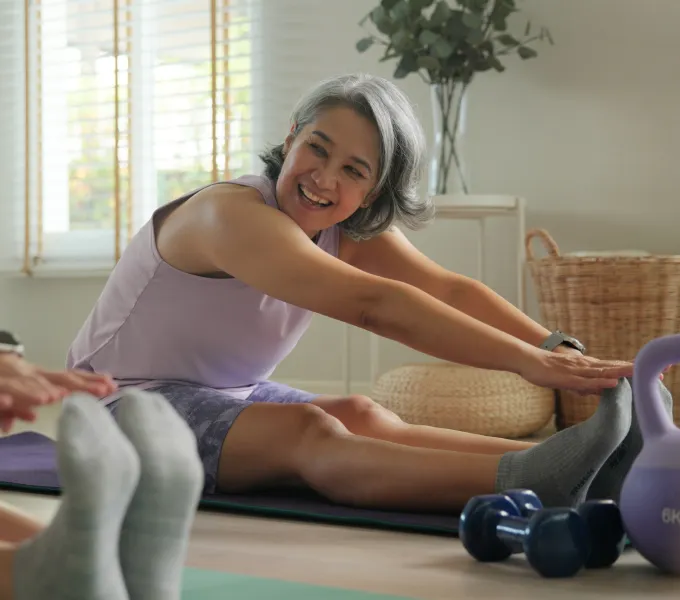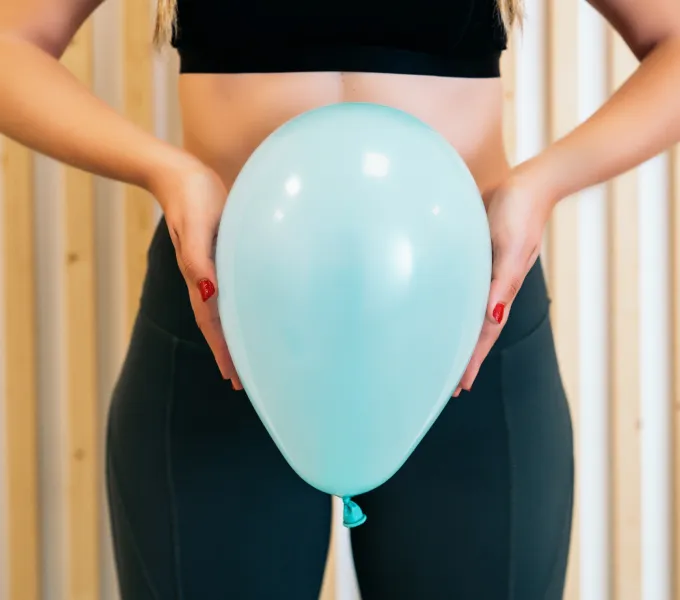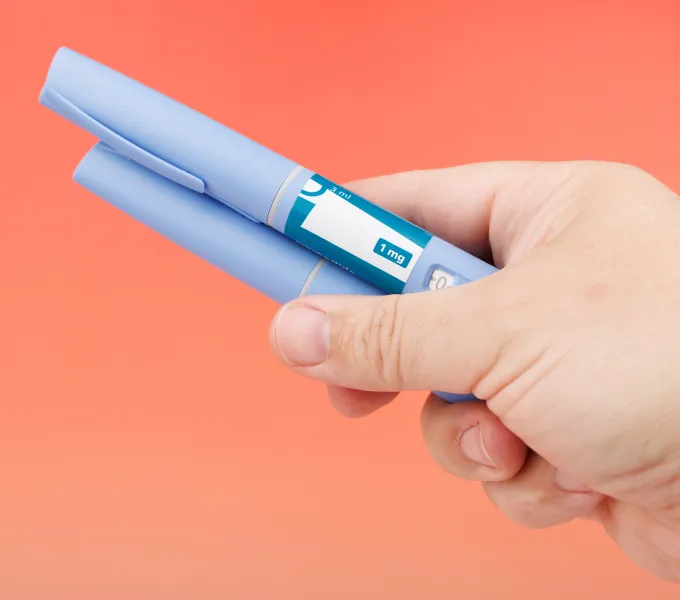
These Pelvic Floor Products are Trending, but Do They Work?
The pelvic health product market is a wild and wonderful place right now, packed with everything from pelvic floor trainers to vaginal weights to vibrating pelvic wands. While we're grateful that all these products are bringing much-needed attention to pelvic floor dysfunction, they aren't right for everyone.
To keep you informed, we try to do product round-ups and reviews whenever we can. This time, we're focusing on three things that patients have been asking about lately:
After diving into the research and getting expert opinions from our PTs, here's what you need to know.
The Cooch Ball
What it is: The Cooch Ball is a simple but genuinely useful pelvic health tool that's designed to treat urinary incontinence symptoms by releasing restricted fascia, improving blood flow, and helping you to reconnect with overly tight pelvic floor muscles. If you're postpartum, the Cooch Ball can also gently mobilize painful perineal scar tissue that lingers after childbirth.

How you use it: Sit on it. The ball fits snugly between your sit bones, pubic bone, and tailbone — sort of like a bicycle seat, but round and soft. Moving around on the ball facilitates muscle release and can be done in conjunction with diaphragmatic breathing.
Our take: “I appreciate that the Cooch Ball calls attention to the fact that tight, restricted muscles can also contribute to bladder leaks — and that kegel exercises are not the only remedy,” says Origin’s Clinical Specialist, Ashley Rawlins, PT, DPT. “But myofascial release is just one piece of the puzzle when it comes to treating incontinence — it’s important to evaluate how your muscles are performing after they are released. That's why using something like the Cooch Ball under the guidance of a pelvic floor physical therapist is always best. A pelvic floor PT can help you understand how myofascial release might benefit your body and can guide you to specific exercises to ease your symptoms."
Expert insight: While the Cooch Ball is specifically designed for your pelvic floor and has a fabulous name to prove it, it's not the only option. In fact, any small, bouncy ball will do. “I typically recommend finding a ball that is about 4 inches in diameter, as this is a good size for your pelvic floor. There are some great options on Amazon, or even in the kid's toy section. You can easily adjust how stiff the ball is with a hand pump,” says Dr. Rawlins. Another easy option that you probably have already sitting around the house is a washcloth. "Roll it up lengthwise, then sit on top of it for similar, if much gentler, feedback and fascia release," says Rawlins.
Innovo Urinary Incontinence Shorts
What it is: The Innovo Urinary Incontinence Kit uses neuromuscular electrical stimulation (NMES) to encourage pelvic floor muscle contractions. Electrodes are embedded in a pair of “smart shorts” that can be worn to stimulate pelvic floor contractions (also known as kegels). The goal is to improve pelvic floor muscle strength and endurance to reduce urinary leakage.

How you use it: Pull on the shorts, plug the red and blue wires into a small device, and then dial up the electrical currents until they trigger pelvic floor muscle contractions.
Our take: "I found that it was hard for the device to target the correct muscles, with more activation in my glutes than my pelvic floor muscles,” reports Origin pelvic floor physical therapist Jen Carr, PT, DPT, OCS, PRPC, after trying them out. She adds "These may not be the most comfortable if you have sensitive skin. The saline spray used to enhance the conductivity of electrodes was itchy and uncomfortable, and I was not able to tolerate it for the duration that was recommended, which was 30 minutes."
Expert insight: For weak, underused muscles, NMES has long been used to help prevent atrophy, and control swelling — particularly in those who can't move these muscles at all on their own. The NMES devices work by creating action potential in the nerve and causing it to contract, similar to how your brain would contract your muscle. That said, high-quality evidence to support the use of NMES to increase pelvic floor muscle strength and endurance to reduce stress urinary incontinence is lacking. This Cochrane Review looked at 56 different research studies on the benefit of electrical stimulation for urinary incontinence (including a meta-analysis on 35 different studies). It was determined that while muscle electrical stimulation with non-implanted devices was certainly better than no treatment, they were not able to prove better results than active pelvic floor muscle training, or other similar active treatments.
While the concept behind the Innovo Incontinence Shorts — and other similar products that use NMES to strengthen pelvic floor muscle through passive exercise — is innovative, these products leave out some really important elements that are needed for lasting pelvic floor muscle change. For the significant, long-term benefits that are common in pelvic physical therapy, it is important to actively participate in a holistic program that focuses on creating change in the central and peripheral nervous systems, task-specific muscle performance, patient education, and behavioral change.
SRC Postpartum Recovery Shorts
What it is: SRC Postpartum Recovery Shorts, aka compression shorts, create gentle pressure that encourages circulation and minimizes swelling and pain in healing tissues. If you're postpartum, they can also help you feel a bit more confident in your ability to move around and care for your newborn in the weeks and months after childbirth.

Our take: “I find compression shorts especially helpful for patients who have a history of pelvic organ prolapse or are complaining of vaginal heaviness after birth," Alyssa Carter, PT, DPT a pelvic physical therapist at Origin, who recommends compression garments to most of her postpartum patients. "The high-waisted bottoms are also easier to use than a postpartum belly wrap for those looking to support their diastasis after delivery.”
Expert insight: Not all compression garments are created equal. When it comes to wearing compression in the early postpartum, you want to look for options with graded compression. In other words, compression is provided throughout the garment, instead of focusing in just one area. “You don’t want compression just in the abdominal area because this can cause downward pressure on a healing pelvic floor” says Dr. Carter. SRC recovery garments are a great option because they have graded compression. “The compression in the SRC recovery shorts have compression that starts below and at the hips and pelvic floor, and continues up to the abdomen,” says Dr. Carter. Some other PT-favorite options include BLANQIs Highwaist Postpartum + Nursing Support Leggings and Bao Bei Sculpt and Recovery Postpartum Leggings.



